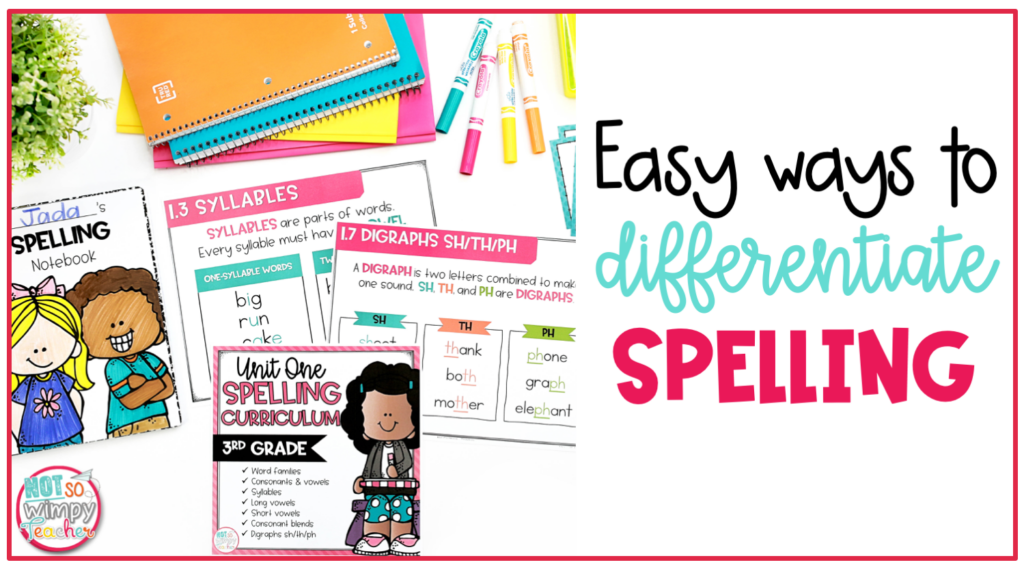
One question I always get in my Facebook groups is, “Do I really have to differentiate all my lessons?” And I get it. Differentiation can feel overwhelming. But the truth is you do have to differentiate all your lessons. So, today we are talking about easy ways to differentiate spelling lessons.
Often, when teachers think of differentiation, they think of multiple lesson plans, different activities for each group, individualized instructions . . . It’s no wonder differentiation feels like an impossible feat. If you had to create multiple versions of every lesson you ever taught, you’d never sleep. Or get through your lessons.
Luckily, you don’t have to do that. You can ensure that each student receives appropriate instruction at their own level without crafting twenty-five unique lesson plans. All you need are a few easy strategies that you can use week after week to differentiate spelling.
Use Differentiated Lists
Keep the Lists Simple
This first strategy is easier than it sounds. When I first started teaching, I tried using differentiated lists. But I had too many lists. And too many groups. And I was trying to teach a completely different lesson to each group. It was a nightmare.
But you don’t need to do this. You can have differentiated lists that all focus on the same spelling skills or concepts. The words all feature the same spelling rules or patterns; they are just different levels of difficulty.
For instance, week one of our third grade spelling curriculum focuses on word families. One word family we teach is the -en family, so all three lists include words with this sound. The A list has simple one-syllable words like hen, pen, and den. We keep these words focused solely on the word families we are teaching. Beginning spellers aren’t ready for digraphs, blends, or multi-syllabic words. And they don’t necessarily have the prior knowledge to be successful in incorporating other rules.
The B list has some more challenging words, like when or then. These kids have a little more background knowledge and won’t be hung up on a blend or digraph.
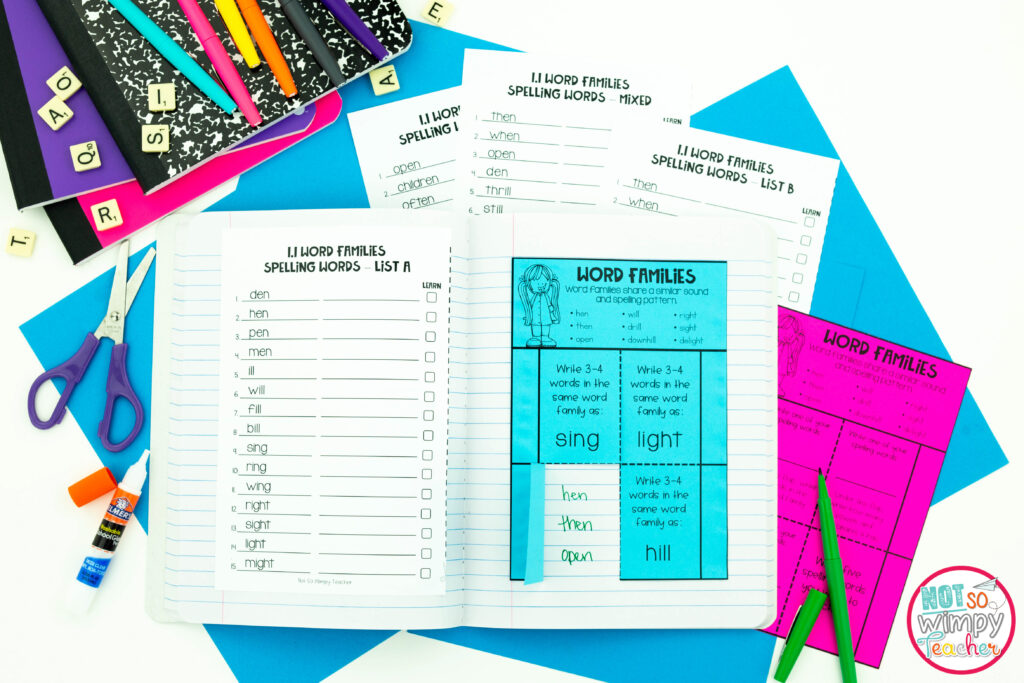
And the C list includes even more challenging words like often, broken, or children. These students can handle multisyllabic words and are comfortable with blends. They have some prior knowledge of spelling patterns and can learn about word families within the context of more difficult words. These kids are often quick learners, and they can incorporate more than one new rule or pattern at a time.
The words on the list aren’t important. We aren’t concerned with students memorizing these particular words. What we want is for them to learn the spelling patterns and be able to apply them so they can spell other words that weren’t part of the lesson.
The beauty of this approach is that it makes planning and prep easy. You don’t need three different lessons. You just need one. During your Monday mini lesson, you can teach the same spelling rule or pattern to all your students. They will just apply that rule to words on their own level.
Picking the Right List
Our spelling curriculum contains a spelling inventory at the beginning of each unit. This inventory is like a longer spelling test, and it includes words that represent all the skills taught in the unit. Based on how students do on the inventory, you can assign the student to the beginning, on-level, or advanced spelling lists.
Don’t worry about moving kids back and forth each week. You can just look at their overall performance on the inventory and pick the list that seems like the best fit. If you assign your student to list B, there might be a week or two where the words are pretty easy for them. That’s fine. They are still getting most of their spelling instruction on the correct level, and the easy weeks just help build their confidence.
But also don’t stress about getting the list perfect during week one. If after a couple of weeks, a list appears to be either too easy or too hard for a student, feel free to move them up or down a level.
And if three lists feels like too much, then just use two. You are still differentiating. But I wouldn’t try and use more than 3. You’ll just make yourself crazy.
Differentiate Activities
Another way to differentiate spelling lessons is to differentiate activities. Here are a few ideas.
Allow Spelling Resources
As your students work on activities throughout the week, you can allow them to use their spelling list or their interactive notebooks as a resource. Everyone is still completing the same activity, but some students have extra support.
My spelling curriculum includes an interactive notebook activity on Tuesday because these activities make great references throughout the week. There are two interactive notebook activities included. You can differentiate by choosing the one that’s best for your students.
Students can decide for themselves whether they need a resource or not. Some weeks they might need one; other weeks they might not. The whole point of these practice activities is to learn the word, so don’t worry about them using references while they are learning.
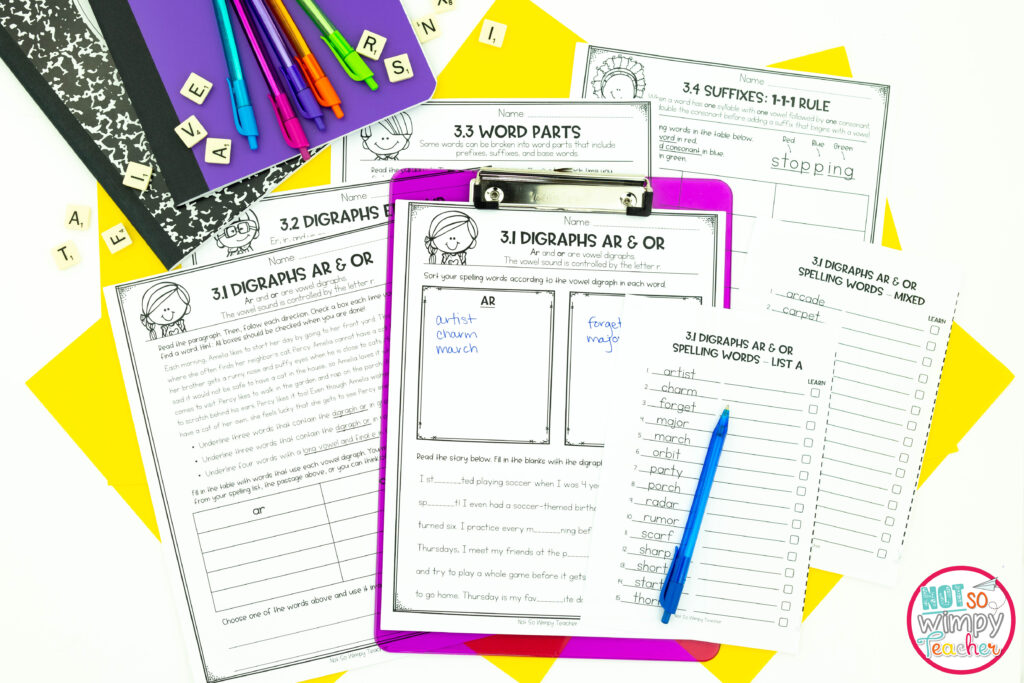
Practice Pages
There is also a practice page that includes a variety of activities. What I love about this activity is that it gives students practice applying their spelling words in an authentic reading task. Students identify spelling words, write spelling words, and then write sentences. You can see that these activities get more challenging as you work through the sheet.
A great way to differentiate is to assign different parts of the sheet to different students. Beginning spellers might just complete the identification activity. Advanced spellers could be challenged to write sentences that include a new word (not a spelling word) that follows the same pattern. Or you could challenge them to use terms from a science lesson, social studies lesson, or certain parts of speech.
All your students are working on the same activity, so there’s no need for separate lesson plans. They are just completing different amounts of the activity.
Task Cards
I love using task cards to teach spelling. Students love this activity too, because they can practice their spelling skills while getting to move around the classroom.
Task cards are so easy to differentiate. You can allow students to use their spelling lists or interactive notebooks as a resource. Additionally, You can also put your beginning spellers together in a group and scoot around with them. You can simply remind them to use their reference materials as a resource or you can provide additional support as needed.
Another way to differentiate spelling lessons is built right into the task card activity. I give my kids ten minutes to complete the task cards. But I don’t use a timer or anything. When they are done with one card they simply move on to the next. Many kids will complete all twelve cards in the ten minutes because the tasks are easy for them. But some won’t. That’s okay. The number they complete is simply another means of differentiation.
If you grade task cards (and you don’t have to), simply calculate how many they got right out of how many they did. So if they completed eight cards and got 6 right, they would get a 75%.
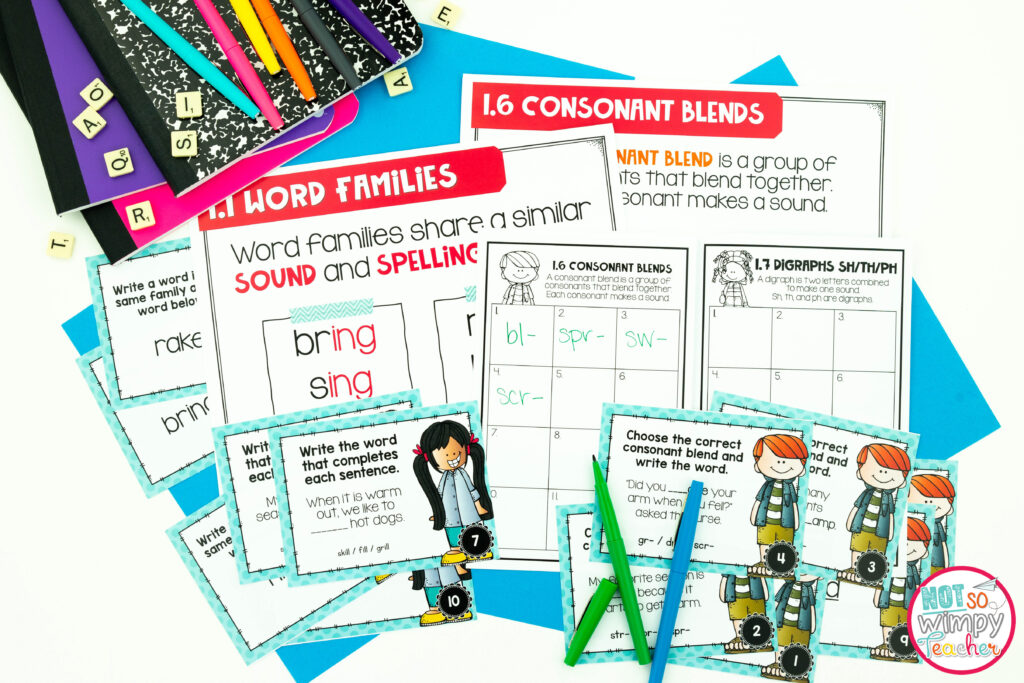
Different Assessments
If you are using different spelling lists, you already have different assessments. But you can even take it a step further.
You can, of course, give students a traditional spelling test where you dictate the list of spelling words, and they write them down. You can also mix things up by giving them different words that follow the same pattern or rule and see if they can spell these correctly.
Make sure the new word is on the same level of the words they were studying all week. For instance, if your students was spelling hen and pen, don’t give them the word mistaken. Instead, give them the word men. This is a more advanced strategy and shows you how well students understand the spelling rule.
You can even challenge kids to make a new word that follows the rule you are testing. Have them use a real word, but not one from their weekly spelling list.
You can also include sentences in your dictation. Again, these sentences can include spelling words or new words that follow the rules you studied that week.
Additional Ways to Differentiate Spelling Lessons
There are lots of other easy ways to differentiate spelling lessons.
- Give more time for partner practice. My spelling curriculum has partner practice time built into every day. This is a great way for kids to practice and learn spelling patterns. If your kids would benefit from more time, give them additional partner practice time.
- Decrease the number of words on the list. Our spelling lists contain 15 words. If that’s just too many for your student, just test them on 12 or 10 or 8. Again, calculate their grade based on how many of the given words they get right. Focus on mastering those limited words first and work on building up to all 15 words.
- Try an oral spelling list. If your kids struggle with writing, give an oral spelling test. You will better be able to assess whether they understand the rules and patterns.
Spelling Curriculum
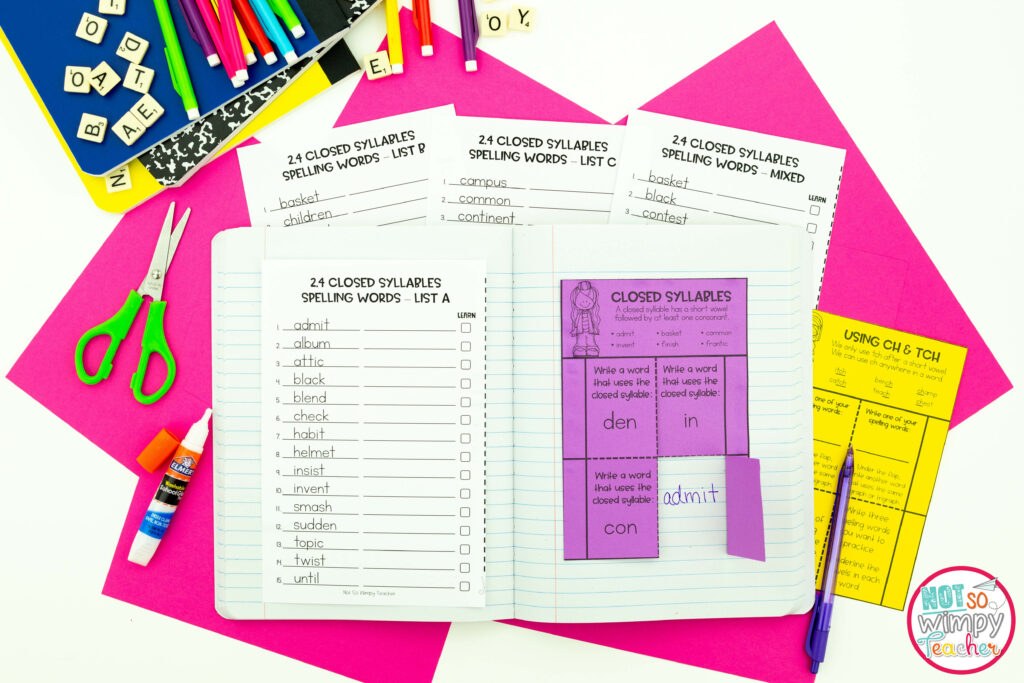
Want to make differentiation easy? Check out my spelling curriculum for second, third, fourth & fifth grades. This spelling program was built with differentiation in mind. Each week comes with four different spelling lists, but all the lists focus on the same spelling skills.
The focus of our spelling program is on learning how to spell and understanding why words are spelled the way they are. Meet kids where they are and help them learn how to spell thousands of words. Inside, you’ll find:
- Differentiated spelling lists (4 each week) and family letter for each week
- Anchor charts
- Interactive PowerPoint mini lessons
- Interactive notebook activities (2 per week)
- Task Cards
- Practice sheets
- Homework sheets (optional) provide additional practice before assessment.
- Assessments
- Spelling Inventories
- Sample Schedules show how to implement the spelling program in 2-5 days per week.
- And detailed teacher directions
It really is everything you need to teach differentiated spelling lessons.
Shop This Post
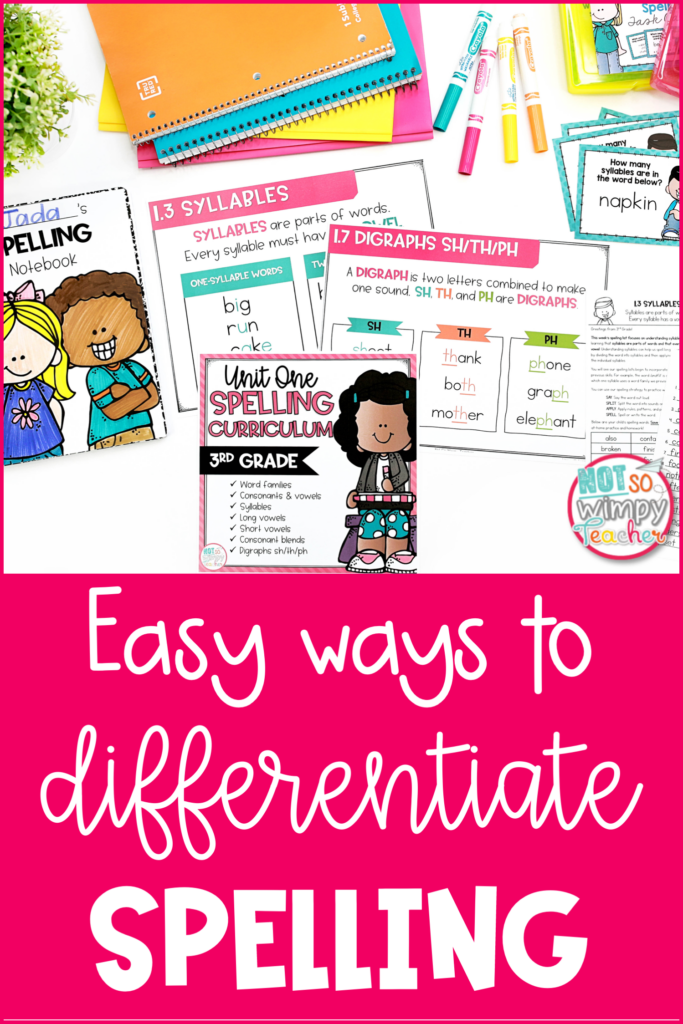
I hope that helps you differentiate spelling lessons without a lot of extra work.


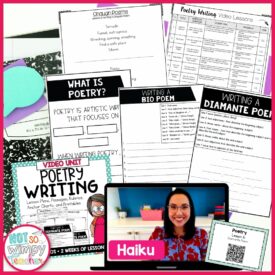


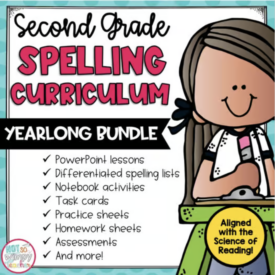
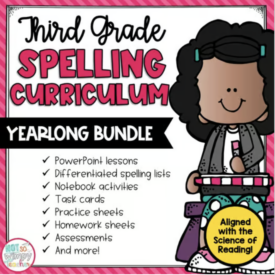


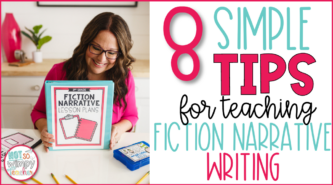

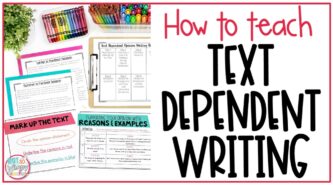











 End of Year Carnival Week for grades 2-5!
End of Year Carnival Week for grades 2-5!
Looking forward to the fourth grade spelling curriculum when it comes out.
Thank you for your interest in our spelling program! We are currently finishing up the third grade version and hope to move into other grades in the future. It will be worth the wait!
Any chance there is a fourth grade or fifth grade list coming soon? I love everything I’ve purchased so far and would LOVE to add those!
And I would love a 5th grade spelling curriculum. I can’t wait!
I would love this also!
Hi Nancy and Michelle,
We hope to create a fifth grade curriculum in the future. Stay tuned!
Do you send home a list of words for the students to practice at home?